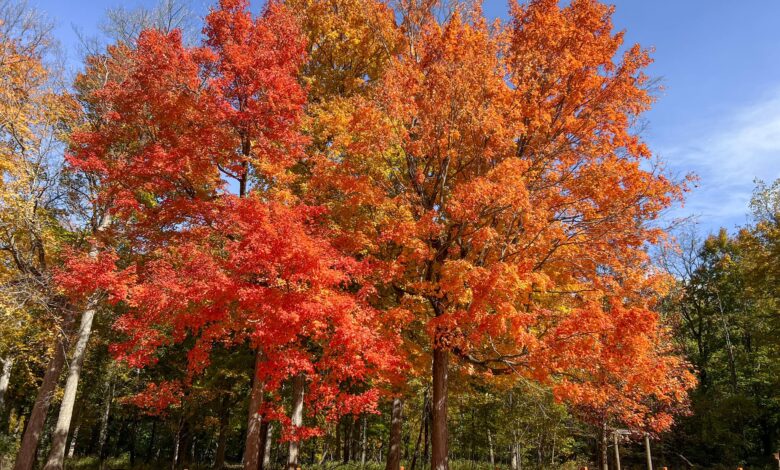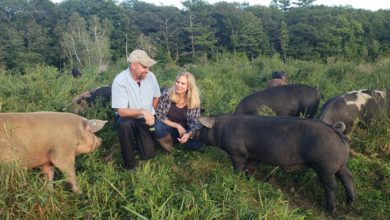Celebrating 75 Years of CCPFD: Homer Lake

By Dani Tietz
Nature has a way of captivating us, providing an escape from our busy lives, and offering tranquility like no other. Look no further than the Homer Lake Forest Preserve if you’re looking for a tranquil getaway amidst breathtaking natural beauty. Nestled in Champaign County, Illinois, this hidden gem offers a wealth of opportunities for outdoor enthusiasts, families, and anyone seeking a respite in nature.
Located 2 miles Northwest of Homer and 15 miles Southeast of Champaign, Homer Lake’s 81 acres feature the Homer Lake Interpretive Center, the Natural Playscape, approximately 10 miles of trails, a Maple Sugar Grove, and, of course, Homer Lake.
Homer Lake
The Illinois Department of Conservation (now the Illinois Department of Natural Resources) built and filled Homer Lake in 1969 when it was a part of the Salt Lake Forest Preserve. The Champaign County Forest Preserve District started managing the land in 1971, making it the second preserve. In 1992, Governor Jim Edgar officially signed the park over to CCFPD.
Planning to construct a sportsman’s lake in the Homer area began in the 1920s. In the mid-1950s, Representative Everett Robert Peters and Representative Ora Dillavou brought the idea to the state assembly. In 1959, the Illinois Department of Conservation published a report detailing the specifications of the lake. However, due to economic constraints in 1958, soil analysis was delayed.
In 1960, Governor William Stratton provided $50,000 in state funding to initiate construction. The lake, dam, and spillway construction started in late October 1967. It required removing 3,800 cubic yards of soil and planting approximately 15,000 trees. The lake was not fully filled until February 1969 due to low precipitation.
In April 1974, storms destroyed the park ranger’s newly constructed home and several other buildings. The cleanup process began promptly, and within the next two years, the lake was restored, machinery was repaired, and new buildings were constructed, including the Trailside Visitor Center. Additional improvements, such as boat ramps and shelters, were added in the 1980s.
Homer Lake and the adjacent Homer Lake Forest Preserve have become integral to the lives of residents in Champaign County and beyond. Every year, thousands of people find joy in visiting the preserve, engaging in activities such as boating, kayaking, fishing, observing wildlife, and admiring peaceful sunsets over the water.
Alongside fishing and boating opportunities in the rural southeast of Champaign County, Homer Lake’s grasslands, prairies, and woodlands draw hikers year-round. With six family-friendly trails throughout the park, hiking enthusiasts can explore over 10 miles of trails that wind through diverse habitats, providing ample opportunities for birdwatching, wildlife spotting, and peaceful walks. The Homer Lake Interpretive Center offers a self-guided trail brochure or a kit full of nature exploration tools for children to borrow. Homer Lake is also a geocaching destination.
Collins Pond
Access to Collins Pond is just a short trip down the road from Homer Lake Forest Preserve at 2563 County Rd. 1200 N., Homer. The property boasts a quiet lake and an out-and-back trail just over a half-mile along the Salt Fork River. Toward the end of the trail is a bench overlooking a bluff along the riverside. When the river is not flooded, visitors head down to put their feet in the river or go fishing.
Natural Playscape
Back at the Homer Lake Property, families oftentimes enjoy the traditional playground and the Natural Playscape, designed to connect a child’s imagination to nature. With running water over rocks and logs, children can explore in the sand, dirt, mud, and other muck as they engage with dams, bugs, and digging holes.
Homer Lake Interpretive Center
Exploration and education continue inside the Homer Lake Interpretive Center, where guests can get up close and personal with wildlife. Ongoing exhibits include The Grand Prairie and Life on the Prairie. Inside, guests will also find aquariums with live turtles and a giant window with a bench to watch birds and other wildlife at the outdoor feeders.
Maple Grove
While many people think of Canada when eating maple syrup, East Central Illinois also has maple groves where trees have been tapped for the sweet sap that becomes maple syrup.
Tom Richards once ran a sugar camp in the preserve’s Maple Sugar Grove, which dates back to the 1890s.
In the 1850s, maple sugar production thrived in Illinois, with 60 counties producing nearly 250,000 pounds. Maple trees, especially sugar maples, are selected for syrup production due to their high sugar content. In late winter, sap rises from the roots to nourish buds, making it the ideal time for tapping. The Homer Lake sugar camp operated for a few weeks during this peak sap flow period, becoming a communal effort. Families and neighbors joined together, with children enjoying the process of making chewy candies by dropping hot syrup onto the snow.
Homer Lake Forest Preserve’s sugar camp operated until the 1920s, tapping approximately 400 maple trees. But for more than a century, the maple grove at Homer Lake has only been used for their annual Maple Sugar Days celebrations, which educate visitors on the history and science of maple sugaring, including hands-on tree tapping experiences.
The grove is also a destination during the peak autumn bloom.



